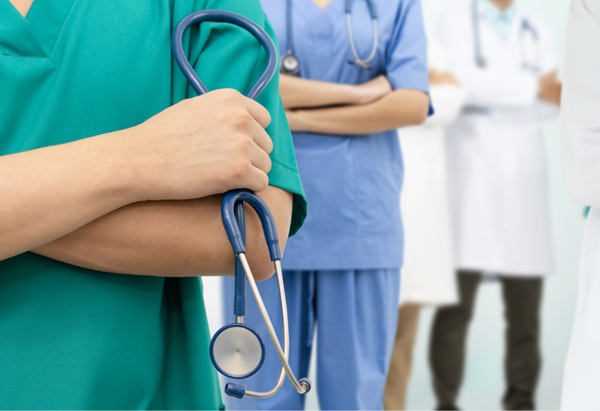ISO 45001: Occupational Health and Safety Standard
What is ISO 45001?
ISO 45001 is the world’s international standard for occupational health and safety, issued to protect employees and visitors from work-related accidents and diseases. ISO 45001 certification was developed to mitigate any factors that can cause employees and businesses irreparable harm. Its standards are the result of great effort by a committee of health and safety management experts who looked closely at a number of other approaches to system management including ISO 9001 and ISO 14001. In addition, ISO 45001 was designed to take other existing occupational health and safety standards, such as OHSAS 18001, into account as well as the ILO’s labor standards, conventions and safety guidelines.
Especially geared toward senior management, ISO 45001 has the ultimate goal of helping businesses provide a healthy and safe working environment for their employees and everyone else who visits the workplace. This goal can be achieved by controlling factors that could potentially lead to injury, illness and in extreme situations even death. As a result, ISO 45001 is concerned with mitigating any factors that are harmful or that pose a danger to workers’ physical and/or mental well-being.
Sadly, thousands of workers lose their lives each day to preventable instances of adverse workplace conditions. In fact, according to the ISO and International Labour Organisation or ILO more than 2.7 million deaths occur globally due to occupational accidents. And in addition to that there are 374 million non-fatal injuries each year, resulting in 4 or more days absences from work.
According to many health and safety experts including the professionals who worked on the ISO committee ISO 45001 represents a landmark breakthrough. For the first time internationally, businesses of all sizes can now access a single framework that offers them a clear pathway to developing better and more robust occupational health and safety measures.
ISO 45001 is heavily informed by OHSAS 18001 not a simple revision or brief update. Read on to see what organizations of all types and sizes need to do to maintain compliance and achieve ISO 45001 certification.
ISO 45001 has seen a 97.3% increase in worldwide certificates in 2020, showing the growth and importance of UKAS accredited certification in recent times. Statistics straight from the most recent ISO Survey.
Looking to implement an ISO 45001 management system? Not sure where to start? Take a look at our ISO 45001 Implementation Guide here.
How To Get Certified To ISO 45001
Helps you with
- Worker Safety
- Risk Management
- Risk Reduction
- Injury Prevention
- Enhanced Occupational Health Measures
- Statutory Identification and Compliance Evaluation
- Improve Productivity
- Enhance Organizational Safety Culture
ISO 45001 — The Fundamentals
ISO 45001:2018 is the replacement to OHSAS 18001 and is the international ISO standard for Occupational Health and Safety Management Systems (OHSMS).
Not only has the standard superseded OHSAS 18001, it makes integration with other management systems simpler than ever before; because it shares the new common structure defined by Annex SL, it is directly aligned with the 2015 versions of ISO 9001 and ISO 14001.
You can find more information about this standard and the differences to OHSAS 18001 in the NQA ISO 45001 Gap Guide below. Please note: Existing NQA OHSAS 18001 clients can get migration support and can download the gap analysis document that must be completed prior to a migration audit.
Benefits of Health & Safety Certification
Reduced operating costs
Less down-time due to incidents and ill health and lower costs from legal fees and compensation means money saved.
Improved stakeholder relationships
Make the health and property of staff, customers and suppliers more of a priority and people will respond.
Legal compliance
Understand how statutory and regulatory requirements impact your organisation and its customers.
Improved risk management
Identify potential incidents and implement controls and measures to keep risk as low as possible, protecting employees and customers from harm.
Proven business credentials
Independent verification against a globally recognised industry standard speaks volumes.
Customer satisfaction and safety
Meet customer requirements consistently whilst safeguarding their health and property.
Win more business with SSIP
This occupational health and safety standard is recognized by Safety Schemes In Procurement (SSIP) within the construction industry.
Corporate Social Responsibility
Implementation of a structured management system can aid demonstration of CSR and organizational culture.
Is ISO 45001 certification right for me?
If you have certification to OHSAS 18001 you will need to migrate to ISO 45001 to maintain the validity of certification. There is the normal 3 year migration period so there is still time to plan your move over to ISO 45001 certification.
ISO 45001 is right if you and your organization need to demonstrate a commitment in managing the safety of workers and interested parties. If you have already implemented a quality or environmental management sytem aligned with the Annex SL structure ISO 45001 can be integrated smoothly. Organizations that implement ISO 45001 need:
-
a clear management structure with defined authority and responsibility
-
defined objectives for improvement, with measurable results
-
a structured approach to risk assessment and reduction
Health & safety management failures, performance and the review of policies and objectives should be regularly monitored to ensure improvements and business benefits are realised and prioritised accordingly.
ISO 45001 terminology and definitions
In ISO 45001 certain terms have been defined for clarification, these include ‘Risk’, ‘The Worker’, 'The Workplace' and ‘Hazard Identification’.
Risk. A universal definition of the term ‘Risk’ is clarified in ISO 45001 as the meaning of this varies in some countries. The issue of hazard identification is that it is currently very manufacturing, and hardware orientated, when more and more of us are working in services.
The term ‘Hazard Identification’ is covered by the terms ‘risk identification and ‘risk control’ to ensure we encompass all potential hazards applicable to all industries and sectors.
The Worker. There are differences in the definition of this term and various legal constraints around this term in different countries – in the context of ISO 45001, ‘The Worker’ is defined as the person performing work or work-related activities that are under the control of the organization.
Workplace. This is now defined as the place under the control of the organization where a person needs to be or to go for work purposes.
Steps to Certification
-
Step 1
Complete a Quote Request Form so we can understand you and your business. We will then use this to personally prepare a proposal for your certification and define what is known as your 'scope of assessment'.
-
Step 2
We will then contact you to book your assessment with an NQA assessor. It consists of two mandatory visits that form the Initial Certification Audit. Please note that you must be able to demonstrate that your management system has been operational for a minimum of three months and has been subject to a management review and a full cycle of internal audits.
-
Step 3
Following a successful stage two audit, a decision is made. If positive, your certification will be issued by NQA, with both a hard and soft copy of the certificate awarded. Certification is valid for three years and maintained through surveillance audits (years one and two) and a recertification audit in year three.



